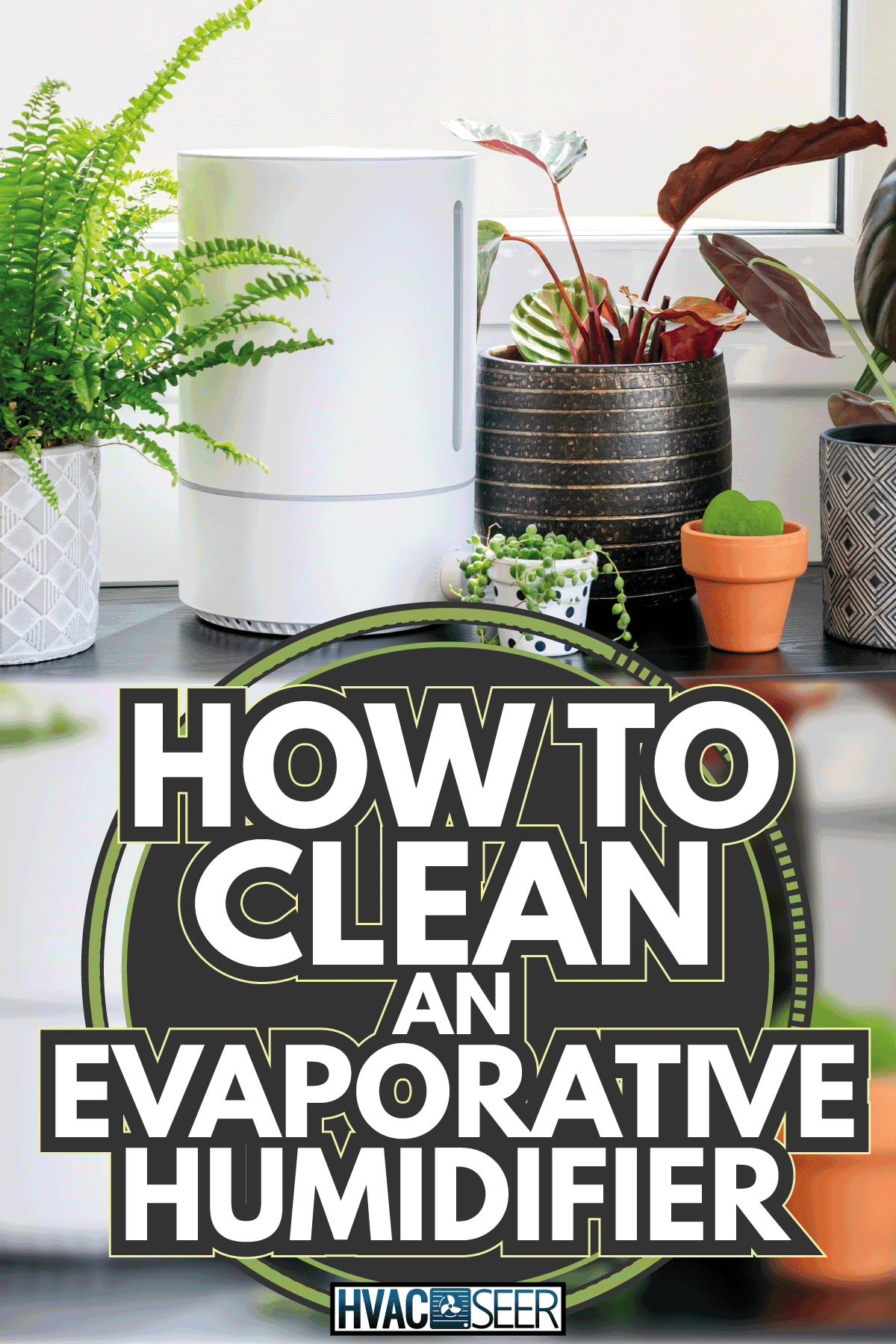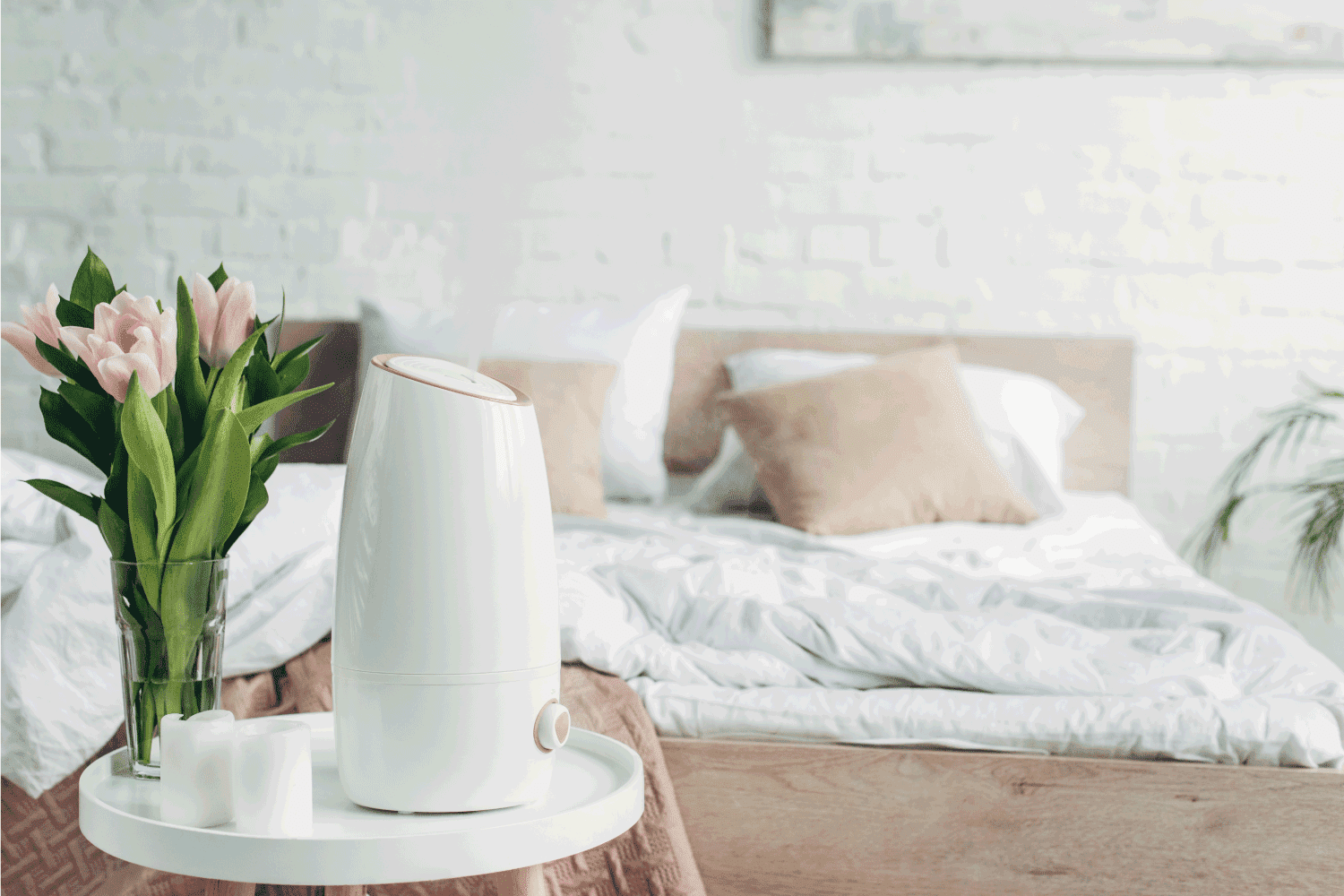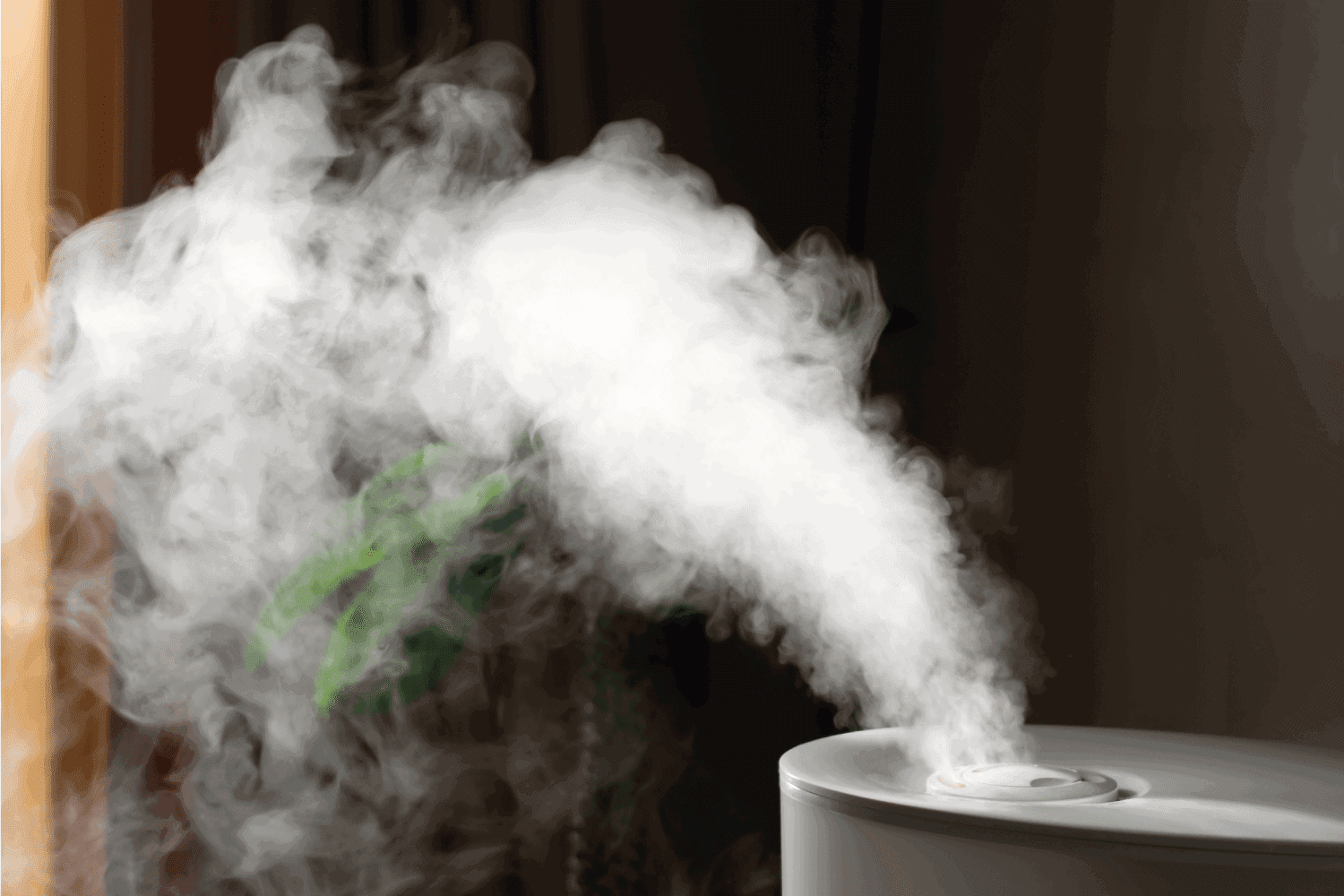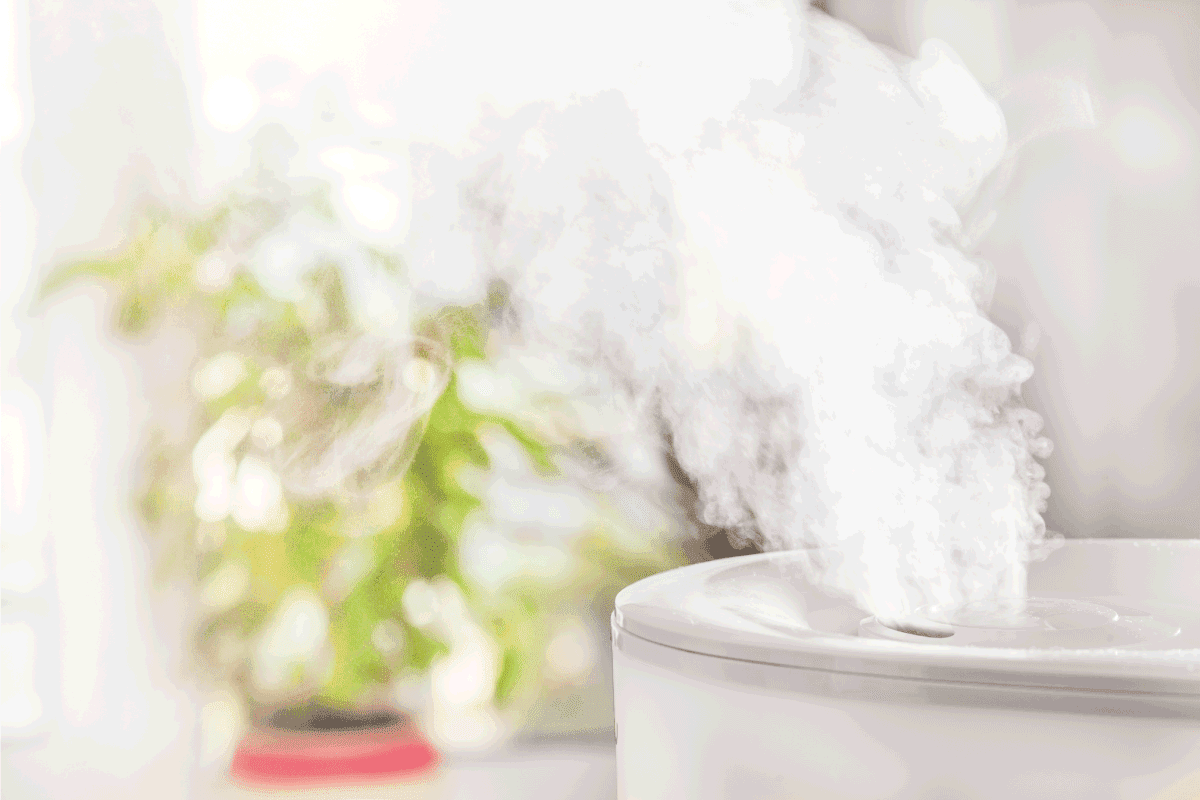An evaporative humidifier is an excellent way to add moisture to dry air, increase humidity in a space, and remove dust and unwanted particulates. However, you may wonder what the best ways to clean an evaporative humidifier are. We've learned the importance of cleaning a humidifier to reduce stains and foul odors, and improve function; here is what our research found about how to do it.
Read the included manual for how to best maintain your device. However, cleaning a humidifier with a cup of white distilled vinegar and clean water is preferred. Typically, you should avoid using bleach or harsh chemicals on your humidifier's wick, filter, or insides because it can damage parts. Soak a filter in clean water and scrub away any mold, mildew, or stains in or around your humidifier with a gentle brush. Rinse parts and the device with hot water before use.
Keeping an evaporative humidifier clean is vital to reducing exposure to mold, mildew, and allergens introduced from a dirty device, filter, and stagnant water.

Maintaining An Evaporative Humidifier
Dry air during colder months can cause chapped lips, dry skin, hurt your nose, and even trigger asthma attacks. Running an evaporative humidifier helps add moisture to the air, making a space more comfortable to breathe.
Because a humidifier includes a wick or filter, it doesn't outright clean the air but may trap allergens, dust, and pollen from the air. Consider the benefits of using an evaporative humidifier to meet your needs versus an ultrasonic type.

Even if you run your humidifier daily and regularly change the water, it is still critical to clean the base, filter, and machine's entirety regularly. Over time, humidifiers can build up scale, mildew, mold, become discolored, and its performance may drop. Cleaning a humidifier as often as every three days or a few times a month can ensure your air is cleaner.
Some people swear by using a bit of diluted bleach, vinegar, or a commercial cleaner to maintain their humidifier and filter. However, it is important to check the manufacturer's suggestions to prevent accidental damage.
Harsh, caustic chemical cleaners can damage the filter, strip away protective elements inside the humidifier's base, or interfere with normal operation. In most cases, using clean water without a detergent is enough to clean a filter or wick.
Clean An Aircare Humidifier
Take good care of an Aircare humidifier by emptying out the tank before you begin cleaning it and demineralizing the device. Fill the tank halfway with warm water and add 2 tablespoons of white vinegar. Allow the solution to sit for a minimum of 20 minutes, and then swish it around before emptying it.
Wipe down any buildup with a soft cloth or use a clean toothbrush to remove debris. Rinse the device a few times with clean water and allow it to air dry.
Make sure to change the demineralization filter for every 500 hours of use. Only use a solution of water and vinegar for the humidifier's size and clean it weekly for best results. Avoid getting the control section wet.
Clean A Honeywell Humidifier
Honeywell suggests that their humidifier be rinsed clean and emptied daily for optimal operation. When refilling the reservoir tank, flip the included filter to help keep it clean.
You can risk using a scant amount of bleach, using no more than 1/2-tablespoon of the substance diluted with water to clean the tank. Make time to separately disinfect and descale the humidifier regularly, but never at the same time.
You can keep this device in top shape by routinely cleaning the tank with 2 cups of white distilled vinegar weekly. Allow the vinegar to sit in the humidifier for 20 minutes before emptying. Never use vinegar or bleach on the filter; instead, replace it or wash it in cool clean water.
Clean A Vornado Humidifier
Maintain your Vornado humidifier by unplugging the device and emptying the tank of water. Fill the reservoir tank with 1-gallon of water and 1-cup of white vinegar. Allow the solution to sit for at least 20 minutes. Dump out the solution and use a clean toothbrush or gentle cloth to remove any buildup. Rinse clean with warm water.
You can use 1-teaspoon of bleach, diluted with 1-gallon of water, to disinfect the tank. Let it sit in the device for 20 minutes before removing and rinsing clean until no bleach smell lingers. Clean the filters with 1-teaspoon bleach and 1-gallon of water, agitating to dislodge buildup and disinfect.
Rinse the filters clean and remove excess water. Allow parts to air dry or wipe down with a clean paper towel before putting it back together and adding fresh water.

How Do You Remove Mineral Buildup From A Humidifier?
Hard water can cause stains or mineral buildup in a humidifier and even trigger respiratory problems. If you notice stains and mineral buildup within a humidifier, you will have to clean it before the next use.
- First, unplug the humidifier and empty it of all water.
- Remove the filter and prepare to replace it after cleaning the device.
- Fill the reservoir tank with white vinegar undiluted and let it stand in the device for an hour.
- Empty the humidifier and scrub the tank and anywhere you see stains with a gentle brush or clean toothbrush.
- Rinse the humidifier clean with hot water and allow it to dry before resuming use.
Reduce problems with a humidifier by using distilled water over tap water, especially if you have hard water. Mineral deposits and lime can irritate the lungs, nose, and throat if not removed from a humidifier and reduce the device's performance.
How Do You Remove Vicks From A Humidifier?
Use a soft, damp cloth or gentle brush to remove Vicks from a humidifier. Empty the reservoir of water and wipe it clean to remove any particulates or buildup. Run water through any tubes, filters, wicks, and rinse the device clean with hot water. Allow it to dry fully before putting back together and resuming use.
Instead of using petroleum-based Vicks on a humidifier, it may be better to use a Vapopad in a VicksVapoSteam humidifier without adverse effects.
Check out this Vicks VapoRub on Amazon.
Is It Okay To Use Tap Water In A Humidifier?
It is okay to use tap water in a humidifier, but it is not ideal. Whenever possible, try to use distilled water that won't easily leave deposits or create buildup over time.
Tap water may be hard because of high levels of minerals or lime and can encourage scale, mold, and mildew in a device. However, distilled water that is non-reactive and stripped of particulates improves the quality of moisture released into the air and is less harsh on a humidifier.
Why Do Humidifiers Get Moldy?
Bacteria and mold spores are always present in the air we breathe, no matter how much we clean or use air purifiers. Because humidifiers are in regular contact with standing water when not in operation, they eventually can develop mold and bacterial growth.
Mold typically likes to accumulate in the filter, at the base where there is water present. It can end up released into the air if a humidifier is not frequently cleaned.
Consider adding one of the following to your humidifier to cut down on mold, in addition to regularly cleaning the device with vinegar.
- Humidifier tablets
- Tea tree oil
- Hydrogen peroxide
Even if heavily diluted and sparingly applied, avoid using bleach, as it can damage hoses, strip protective layers, and corrode the device. Reduce the chance of mold and buildup by using a filterless humidifier or replace the filter every one to three months.

In Closing
We hope you leave feeling more confident about cleaning your evaporative humidifier. It is essential to routinely clean your humidifier and change the water to reduce buildup, mold, bacteria, and dust from blowing around when the humidifier is in operation. When possible, look for humidifiers that include UV treatment of water to improve your health.
Evaporative humidifiers are considered to be the best type to use in a home for multiple reasons, compared to an ultrasonic model or other types. No matter what size or brand of humidifier you choose, keep it clean to reduce illness, allergic reactions, and optimize its performance.
Before you go, don't skip out on the following helpful articles.

